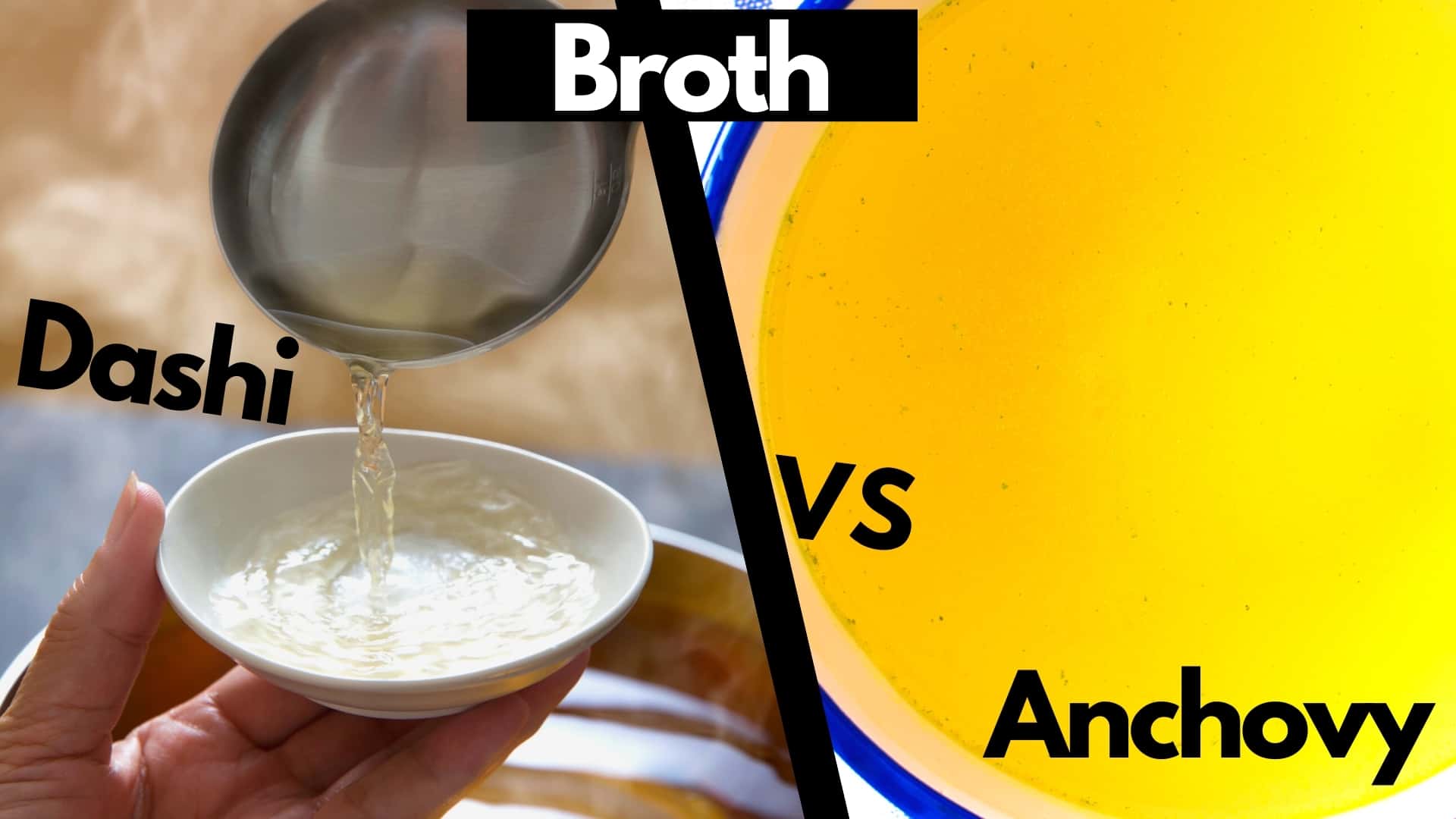Dashi vs Anchovy Broth: Differences in taste, uses, and countries
One thing you may notice is that among Asian cultures, there are often ingredients and recipes that are very similar. This is especially the case with dashi for Japanese and anchovy broth for Korean cuisine.
While they are very similar, they also have several major differences that I’ll explain in detail.


Check out our new cookbook
Bitemybun's family recipes with complete meal planner and recipe guide.
Try it out for free with Kindle Unlimited:
Read for freeThe Taste
Dashi and anchovy broth have many of the same ingredients, though anchovy broth uses entire anchovies as opposed to just flakes of a fish like dashi.
As a result, anchovy broth has a much fishier taste to it. While it may still be jam packed with umami from the kelp, anchovy broth will have a much more noticeable fish taste.
That taste will be much more subtle in dashi since dashi places more emphasis on the kombu.
One major difference in the making of anchovy broth is that it sometimes has more ingredients than dashi.
Rather than just using kombu and fish flakes, anchovy broth also includes onion, garlic, dried mushrooms, and even some radish.
With these extra ingredients, you will likely notice the difference in taste if you tried both dashi and anchovy stock simultaneously.
Uses
Dashi has many uses in Japanese dishes, essentially the backbone of Japan’s culinary culture.
While it is most commonly used in miso soup, ramen, and udon, dashi can also be used in sauces along with frying and battering meat and vegetables for tempura.
Anchovy broth, like dashi, is often used for soups and stews in Korea, and it’s very versatile, and used in many Korean recipes.
Countries that use it
While anyone in any country could make a dish that uses either dashi or anchovy broth, these ingredients do have places where they are the most commonly used.
For dashi, that would be Japan, where it was created and developed gradually over several hundred years. Anchovy broth, however, originates from Korea.
Given all the similarities between the two ingredients, their uses, and the region they both came from, it is unclear if there was any cross-culture influence that resulted in their creation.
Whether you use dashi or anchovy broth will depend on your personal preference and what recipe you are making.
Usually Korean recipes will be better suited to anchovy broth, and Japanese to daashi
Also read: dashi vs kombu, how are they used
Check out our new cookbook
Bitemybun's family recipes with complete meal planner and recipe guide.
Try it out for free with Kindle Unlimited:
Read for freeJoost Nusselder, the founder of Bite My Bun is a content marketer, dad and loves trying out new food with Japanese food at the heart of his passion, and together with his team he's been creating in-depth blog articles since 2016 to help loyal readers with recipes and cooking tips.
